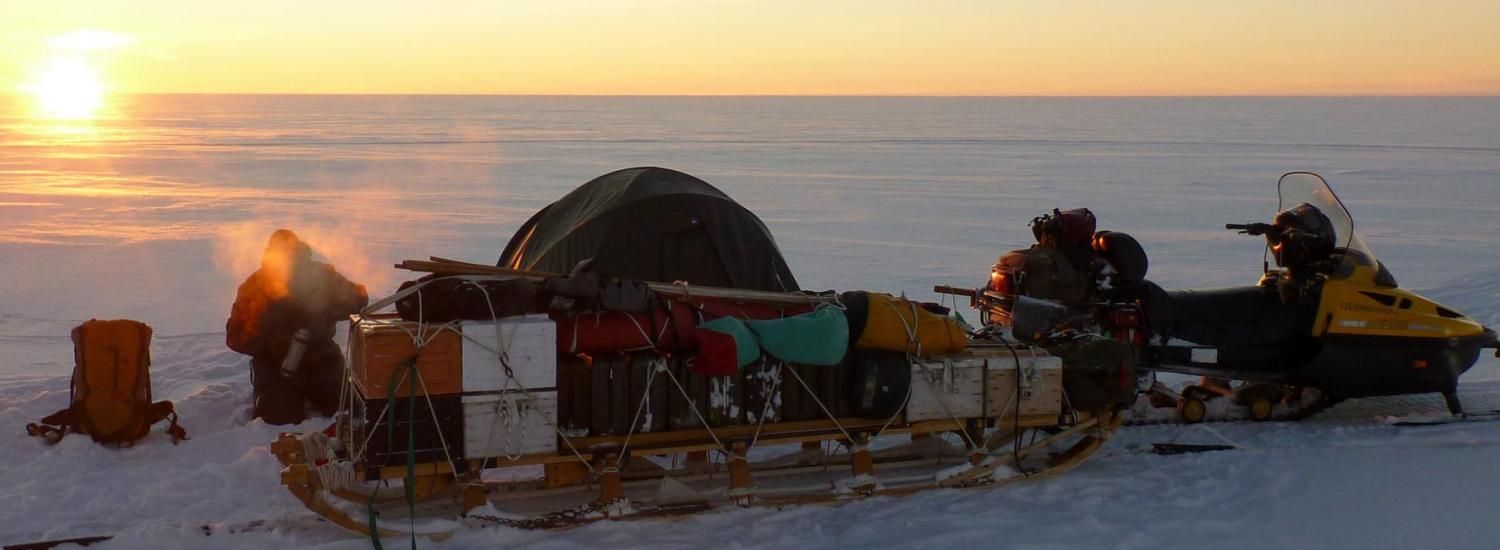New study shows Antarctic ice shelf is thinning from above and below

The Larsen C Ice Shelf—whose neighbours Larsen A and B, collapsed in 1995 and 2002—is thinning from both its surface and beneath, according to an international study published in the journal The Cryosphere, a journal of the European Geophysical Union.
For years scientists were unable to determine whether warming air temperatures or warmer ocean currents are causing the Antarctic Peninsula’s floating ice shelves to lose volume and become more vulnerable to collapse. This new study takes an important step forward in assessing Antarctica’s likely contribution to future sea level rise.
The research team combined satellite data and eight radar surveys captured during a 15-year period from 1998-2012. They found that Larsen C Ice Shelf lost an average of 4 meters of ice, and had lowered by an average of one meter at the surface.
“What’s exciting about this study is we now know that two different processes are causing Larsen C to thin and become less stable. Air is being lost from the top layer of snow (called the firn), which is becoming more compacted, probably because of increased melting by a warmer atmosphere. We know also that Larsen C is losing ice, probably from warmer ocean currents or changing ice flow,” said lead author Paul Holland from the British Antarctic Survey (BAS).
“If this vast ice shelf—which is over two and a half times the size of Wales and 10 times bigger than Larsen B—was to collapse, it would allow the tributary glaciers behind it to flow faster into the sea,” Holland said. “This would then contribute to sea-level rise.”
The Antarctic Peninsula is one of the fastest warming regions on Earth, with a temperature rise of 2.5˚C over the last 50 years.
The team, which continues to monitor the ice shelf closely, predicts that a collapse could occur within a century, possibly sooner and with little warning. A crack is forming in the ice which could cause it to retreat back further than previously observed. The ice shelf appears also to be detaching from a small island called Bawden Ice Rise at its northern edge.
“When Larsen A and B were lost, the glaciers behind them accelerated and they are now contributing a significant fraction of the sea-level rise from the whole of Antarctica. Larsen C is bigger and if it were to be lost in the next few decades then it would actually add to the projections of sea-level rise by 2100," said David Vaughan, a glaciologist and Director of Science at BAS.
“Ice shelves strongly regulate the flow of glaciers into the ocean and when they weaken or collapse, this flow increases, often substantially," said CIRES researcher Dan McGrath, a co-author on the new study. "Quantifying the changes occurring to Larsen C and other ice shelves around the continent is essential for informed predictions of sea-level rise.”
The study was carried out by scientists from British Antarctic Survey, the United States Geological Survey, the Cooperative Institute for Research in Environmental Sciences at the University of Colorado Boulder, University of Kansas and the Scripps Institution of Oceanography.
It was funded by the Natural Environment Research Council in the UK, the National Science Foundation in the US and a range of international funding bodies around the world.
CIRES is a partnership of NOAA and the University of Colorado Boulder